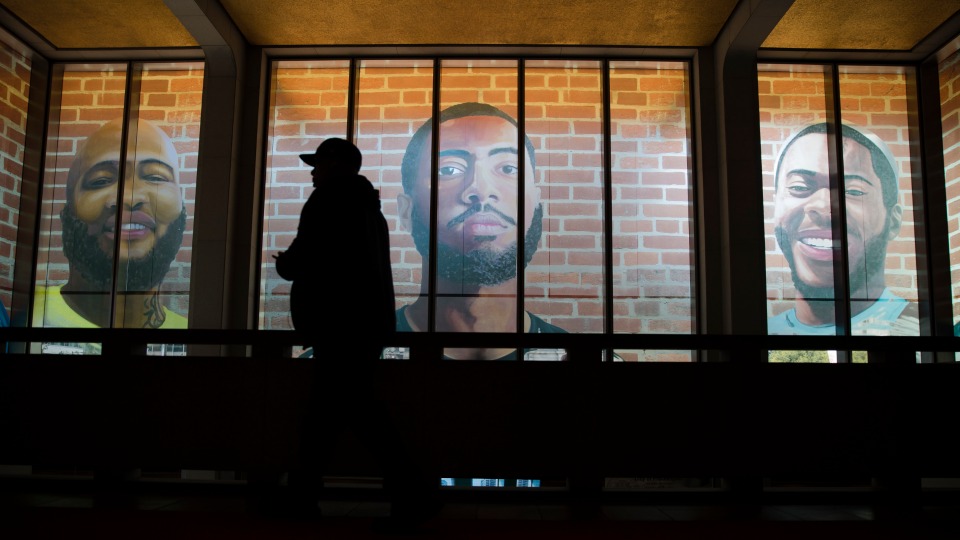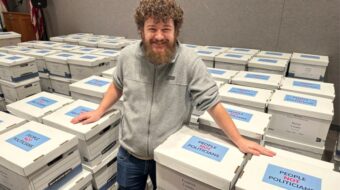
The United States is infamous for its prison system. With less than 5% of the world’s population, the U.S. houses 25% of the world’s incarcerated people.
Nearly seven million people live in prisons, jails, immigrant concentration camps, and related facilities. They are on probation or parole and subjected to scrutiny and surveillance that leaves them vulnerable to the violence and control of the state. For millions more, who have managed to survive that interconnected system of control and violence, being marked as a “convict” or “felon” makes them permanently disposable by employers, unable to vote, or denied social services. Hundreds of thousands of people refused legal immigration status or the right to appeal for refugee status are deported each month.

This system, it is well-known, specifically targets disproportionately Black, Latinx, and Indigenous people. U.S. social institutions such as juvenile systems, schools, healthcare servers, employers, and the courts subject the young people of these communities to preparation for incarceration, as scholar Monique W. Morris has shown in her book Pushout.
In constructing this mass incarceration system, public-private partnerships have enriched private corporations, boosted police budgets to all-time highs, and still have not solved the problem of crime. Ruth Wilson Gilmore, in her groundbreaking study, Golden Gulag, explores the origins and corruption of the for-profit prison system in California. Angela Davis, in her earlier book, Are Prisons Obsolete? also connected corporate profits from prisons to the dominant punishment culture.
Indeed, the failure to end crime becomes a driver for new spending, new forms of corruption, more intense levels of militarization of the police, and new rounds of violence targeting the most vulnerable communities. Movies and television programs regularly foster fear of violence and an unrealistic belief that police solve crimes. The message is that punishment is the only way to end crime.
Danielle Sered, author of Until We Reckon, writes, “America has long had a love affair with punishment.” It has deluded itself into believing that punishment and accountability are the same things and that locking up people deemed dangerous will make us safe. Sered shows that despite locking up our population “at a rate and scale unprecedented in human history,” the empirical data shows the opposite reality.
The racist dimension of mass incarceration is not an anomalous feature of U.S. history. Racist mass incarceration exploded within about 15 years after the passage of civil rights laws that legally dismantled racist apartheid in the U.S. South and offered new avenues for opportunity across the country through affirmative action programs.
Reflecting on U.S. history on a larger scale, it’s worth noting that the Jim Crow apartheid system was legally established in the U.S. after the Supreme Court gave its permission in the 1880s and 1890s. First, the court struck down federal civil rights laws passed in the wake of the Civil War, then it okayed the “separate but equal” doctrine that proved never to be equal.
Jim Crow’s notorious social confinement of Black Americans, 90% of whom lived in Southern states in the 1890s, was erected a decade or so after the end of legal slavery in the U.S. Thus, other than those 25 to 30 years of ostensible freedom after the Civil War and the passage of civil rights laws, the U.S. has been a system of enslavement, imprisonment, social segregation, or the threat of such for its entire existence as a country.
Wrap your head around that.
Again, this condition is not accidental but rather the product of deliberate choices rooted in white supremacy. The celebrated philosopher Lewis Gordon notes in his recent book Fear of Black Consciousness that white supremacy is the “channeling of institutional systems of power toward the disempowerment of targeted groups of people, its effectiveness depends on the meeting of the state and cultural resources.”
In this particular case, the U.S. is a state dominated by white people who perpetuate cultural practices that value white people and foster a hatred of Black and brown people. Policing and prisons, Gordon notes, are simply the most violent expressions of that display of power. It gives whites a “license” for violence, to kill, to harm, or to simply look the other way.
While the 2020 #BlackLivesMater uprising disturbed that trend, the evidence suggests that the police, the courts, the prison systems, and the government itself are incapable of reforming themselves in their present conditions.

In the state of Michigan, where this author lives, the brutality of racist mass incarceration has emerged in recent media reports. The inadequacy of medical care for imprisoned people, overcrowded living conditions, denial of educational and training opportunities, abuse of men and women prisoners by guards and staff, and ongoing barbaric conditions such as dirty facilities, inedible food, and violence plague the system. Incarcerated women at an all-women’s prison near Ann Arbor have complained of hundreds of cases of sexual assault and rape, sometimes deployed as a means of punishment by guards.
Tax cuts for the rich promoted by neoconservative politicians and neoliberal policies of privatization of public services have led to massive budget cuts. Meanwhile, cuts in education services and reduced healthcare capacities ensure that more people will turn to criminalized activities.
Political choices to cut budgets rather than fight for equality and fairness are responsible for some of the worst conditions. The general public attitude favoring punishment for criminals, especially Black or brown people, rather than rehabilitation or diversion programs supplements these cuts by allowing many political leaders to simply ignore human rights atrocities.
Programs that would divert young people, perpetrators of non-violent infractions, interpersonal harms, or drug-related offenses to public health, counseling, worker education, or community service rather than prisons or jails are under-resourced. In the punishment mindset, they are viewed as illegitimate.
In effect, Americans, who are indeed collectively responsible for the society we live in, have created a racist prison society. We deny opportunities for full human development to our youth, with a racist focus on denying Black, brown, and Indigenous youth opportunities for education and the promise of achievement. We criminalize them when they express anger and frustration with these roadblocks. We punish and abuse them. When we let them out, we hound them and permanently attribute to them second-class citizenship. And when they reject social norms, we continue the vicious cycle of punishment.
Through this irrational circle of harm and hate, we deny each other an opportunity to break this cycle of violence. Until we collectively fight racism and the dominance of the police-prison complex, we will be stuck.










